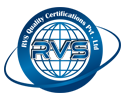Half Cell Potential Testing
STUDENT RESULTS RVSGLOBE
Click HereHALF CELL POTENTIAL TESTING
Half Cell Potential Testing is a type of non-destructive test performed for reinforced steel corrosion. Half cell potential test is the standard test method with corrosion monitoring techniques for uncoated reinforcement steel present in the concrete.
Uses of half cell potential testing
The Procedure of Half Cell Potential Testing
Half cell potential testing is used for measuring the potential and the electrical resistance between the surface and the reinforcement which helps to evaluate the corrosion activity by covering the layer during the testing. The electrical activity and the reinforcement along with the concrete will lead one half of the battery cell and the steel acts as the electrode and concrete acts as an electrolyte.
Half Cell Potential Testing is performed with the corrosion in the presence of humidity and oxygen present in the concrete which corrosions steel bars. The electric potential of a point present on the surface of the steel reinforcement bar can be measured by comparing the surface potential with copper and the copper sulphate acts as the electrode on the surface. This can be achieved by connecting the wire from one voltmeter terminal to the reinforcement and the other wire is connected to the copper sulphate. Thus this procedure helps in half cell potential testing of concrete surfaces.
Once the surface measurements are completed, the measurements are carried away from the concrete surface to avoid reinforcement occurs due to the concrete corrosion. There are several factors correlated with the corrosion potential measures as:
The reading of the half cell potential testing is taken on the appropriate grid with the testing element size. The high negative reading is likely to have the highest corrosion presence on the cement surface. Usually, the results are provided in a tabular form to identify the potential problematic area.



